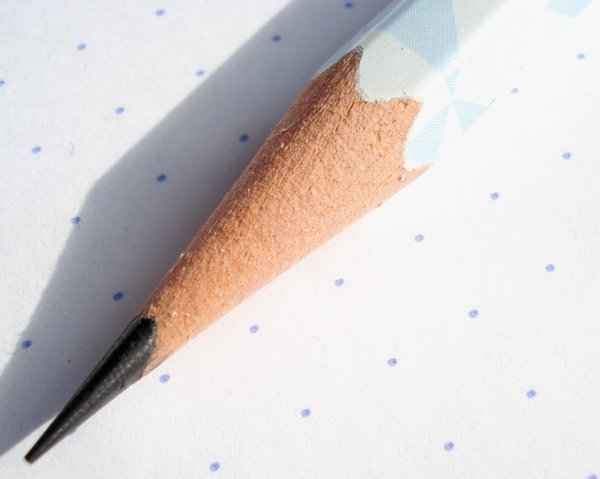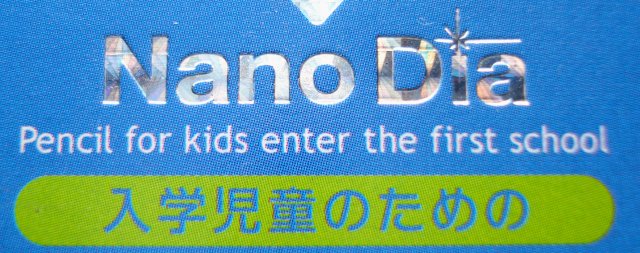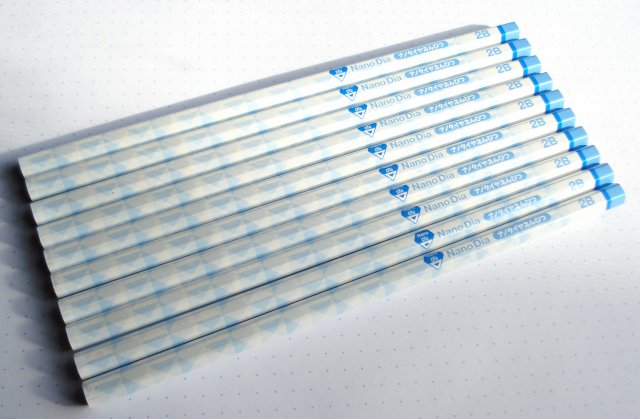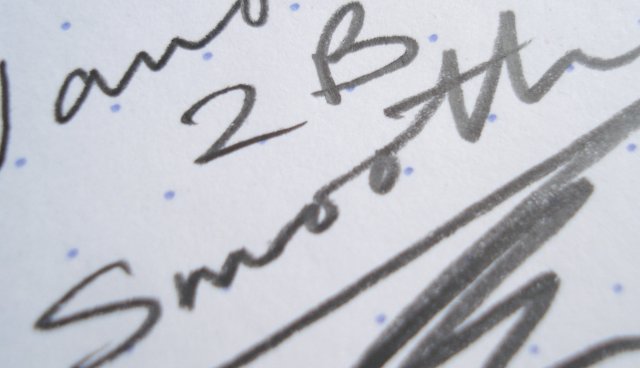
The Mitsubishi NanoDia pencil is supposed to be something special. The graphite is claimed to benefit from some important and noteworthy quality advances.
The line was announced in 2008, and started with mechanical pencils refills; woodcase pencils were introduced a couple of years later. The features of note include strength and density.
Now considering this matter, I’ve been wondering just how a major pencil manufacturer introduces product improvements. Paint or wood improvements are probably simple enough to introduce, and won’t likely disrupt the user base, but a change to a graphite formula could cause problems. A key differentiator of the top global pencil lines – the Hi-Uni, the Mono 100, the Castell 9000, or the Mars Lumograph 100 – is that they remain the same high quality product, and perform the same way, year after year, decade after decade. That they remain absolutely reliable and stable as tools for artists is a main selling point over readily available and less expensive alternatives.
So how then, does an improvement get introduced? Well, perhaps it depends on what the feature is – if the strength of a lead core can be improved without changing other pencil characteristics, then that feature could possibly be integrated with the main pencil line. But any feature that changes the feel of the lead on paper, or the blackness or luminescence of the line, or the known chemistry between the graphite and paper, probably has to be directed elsewhere. And perhaps even making the lead stronger might be seen as too much change to a formula.
So if Mitsubishi did find a way to make a graphite core denser and smoother, one can see that they may have had a problem on the matter of what to do with their discovery. An established line can’t just be altered. So the features went into a new product – the NanoDia.

NanoDia? Nanoscopic diamonds? Well, graphite molecules are no doubt the cousins of diamonds in the carbon family.

The pencils look like (and are labelled as) a product for children. So what about the scientific advances said to be in the formula? Shouldn’t this be a product in Mitsubishi’s premier Uni range? Here I am lost – if the product is what it claims to be, why is it priced and packaged as a lower end item?

So regarding the pencils – they come in B and 2B grades, and a choice of green, pink, or blue finishes. They are hexagonal with unfinished ends. I bought a box of the 2B with the blue finish.

The pencil does leave a notably dense, rich, black line. I like it, but am undecided about the appearance.

Thanks for this post – this is the first I have seen of these pencils. Though not exactly the same situation, it reminds me of their penmanship (pencilmanship? pencilpersonship?) pencils. I’ve only tried the 4B, but it is markedly different than the regular Hi-Uni 4B. I was concerned at first that this might be a way of re-packaging what was essentially the same pencil, but it’s not. So, some ‘advance’ was made–and as you alluded to here–it was put into another product rather than altering the established line.
I suppose money is saved by only having two grades, unfinished ends and probably cheaper paintwork. I always think twice about pencils that are overly dark, the smudging and point retention issues being a major concern. I do have the nanodia mechanical pencil leads but I still prefer Pentel AIN leads. Nevertheless, full marks to Mitsubishi, who do have a reputation as innovators. Excellent post.
I’ve mentioned these Kakikata pencils before, but I’ve never had a chance to play with them. As they are developed with NanoDia as a lead basis, I was under the assumption that they go the Polymer route much like Pentel’s Black Polymer 999. In fact, I was wondering if the young student marketing pathway was a direct result of the BP999’s relative lack of success with its target market, which was clearly more mature (the box for the BP999 was beautiful).
Many people notice that the polymer leads from the BP999 and CDT and related pencils look different from the standard ceramic leads. Do the Kakikata pencils look similar?
Hi Robert,
Visual inspection doesn’t lead me to any conclusions about the lead. There could be some differences that are beyond the capabilities of my vision.
Hello I have just discovered your wonderful site. At school years ago I was always given japanese pencils that were very long and thin with a string attachment consisting of a small packet of crayons. I have many pieces of japanese stationary and am interested in accumulating more.
At the moment I am working on finding multicoloured pencil/pens but I would like to also find refills for them.
Can anyone find anything that is suitable.
I have bought a few of these with the same assumptions Robert M. had. However, I am a little disappointed because the lead tends to crumble and the finish does not match the quality of the other Mitsubishi pencils I know. It looks like some kind foil has been applied, resulting in a line at which the pattern breaks.
I gave these a miss on my last Pencils.jp order, because they looked to have a pretty poor finish, though I now wish I’d bought at least a few. Disappointed to hear that they’re crumbly, though — even in a budget pencil, such as their 9000 range, Mitsubishi usually manage to do better than that.